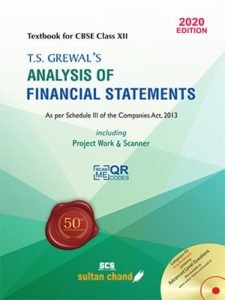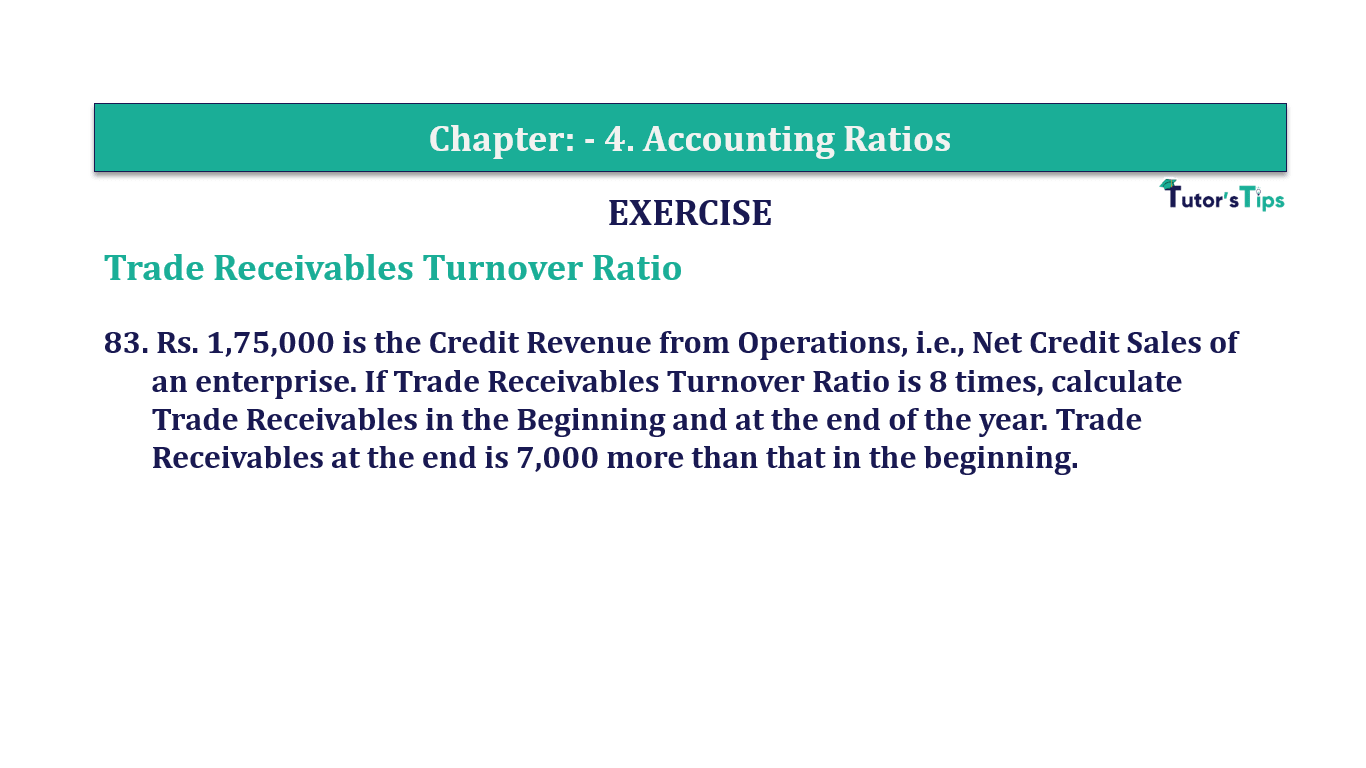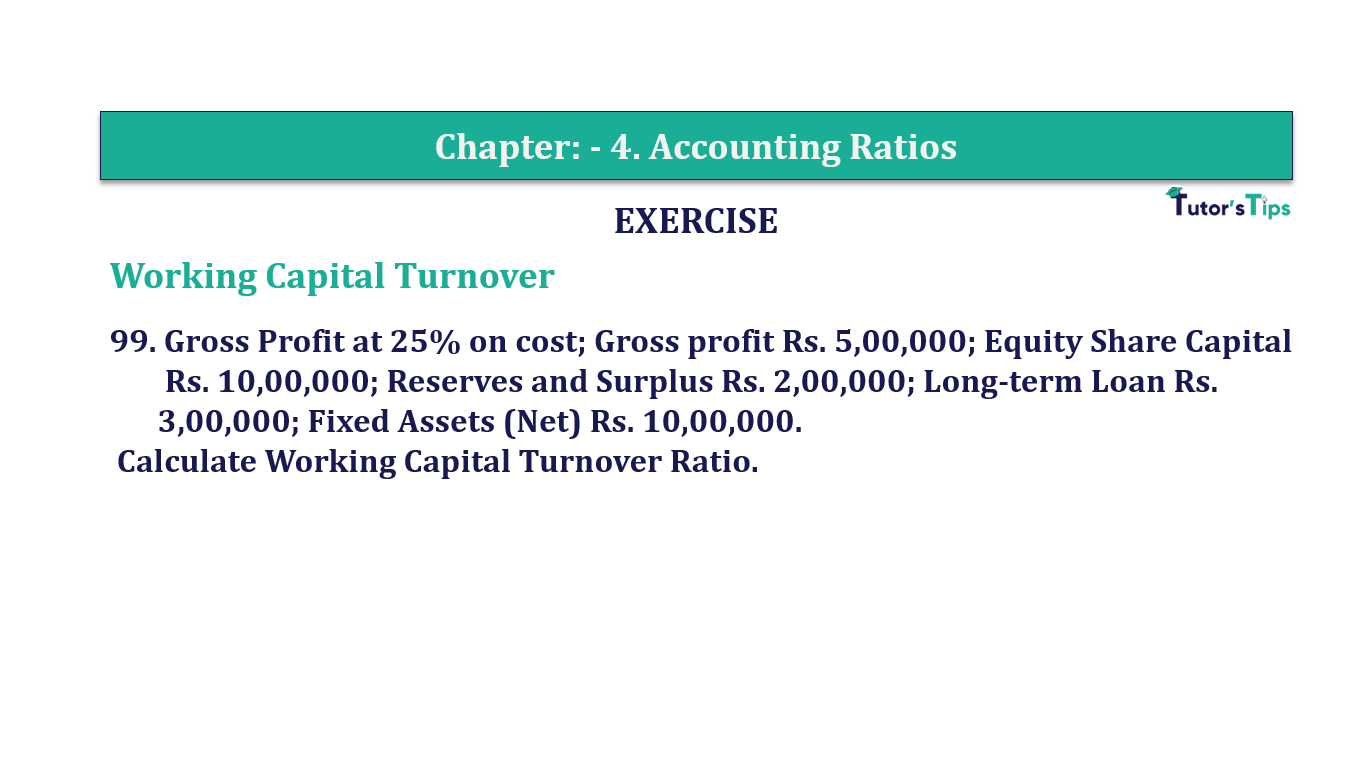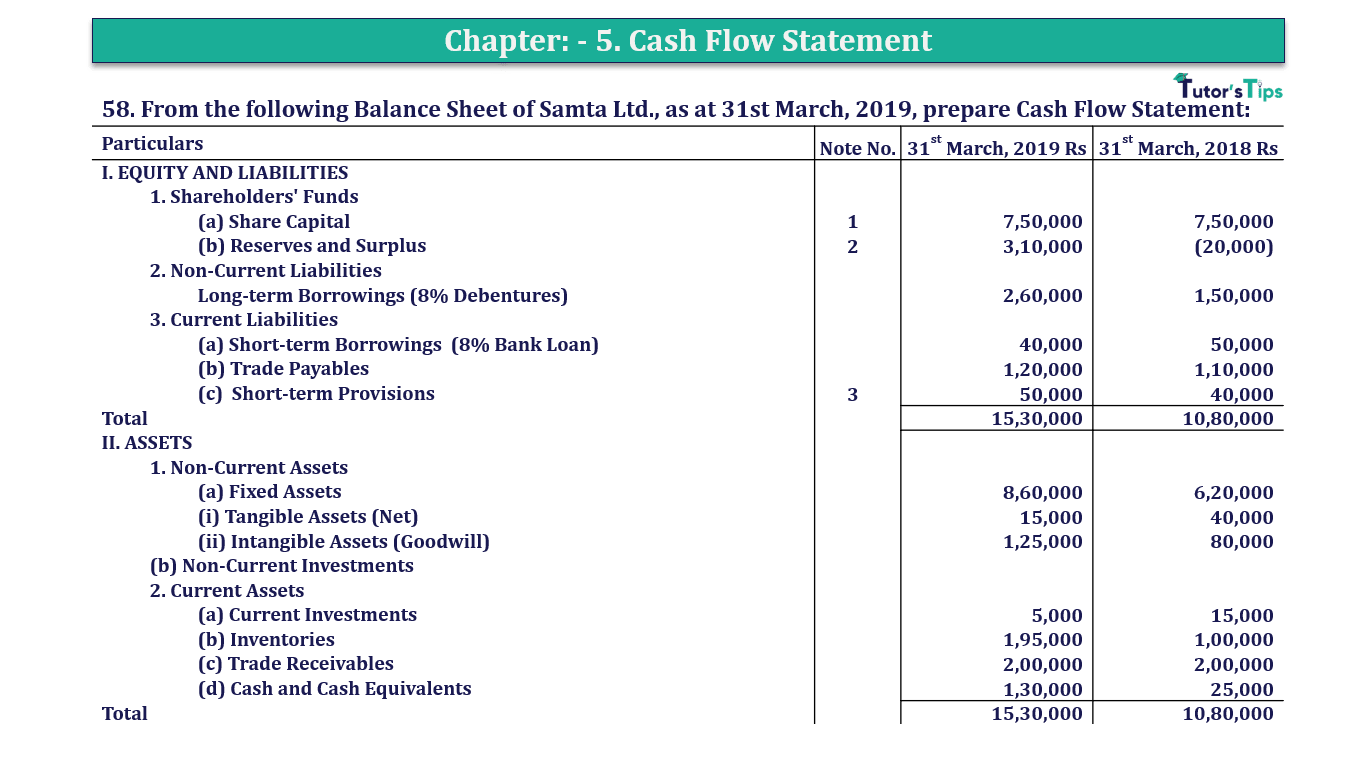Question 83 Chapter 4 of +2-B
Table of Contents
Interest Coverage Ratio
83. Rs. 1,75,000 is the Credit Revenue from Operations, i.e., Net Credit Sales of an enterprise. If Trade Receivables Turnover Ratio is 8 times, calculate Trade Receivables in the Beginning and at the end of the year. Trade Receivables at the end is 7,000 more than that in the beginning.
The solution of Question 83 Chapter 4 of +2-B: –
| Trade Receivable Turnover Ratio | = | Net Credit Sales |
| Average Trade Receivable |
| 8 | = | Rs. 1,75,000 |
| Average Trade Receivable |
| Average Trade Receivable | = | Rs. 1,75,000 |
| 8 | ||
| = | Rs. 21,875 |
| Opening Trade Receivables | = | X |
| Closing Trade Receivables | = | X + Rs. 7,000 |
| Average Trade Receivables | = | Opening Trade Receivables +Closing Trade Receivables |
| 2 |
| Rs. 21,875 | = | X + (X + Rs. 7,000) |
| 2 |
| Rs. 21,875 x 2 | = | 2x + Rs. 7,000) |
| Rs. 43,750 | = | 2x + Rs. 7,000) |
| 2x | = | Rs. 43,750 – Rs. 7,000 |
| X | = | Rs. 36,750 |
| 2 | ||
| = | Rs. 18,375 |
| Opening Trade Receivables | = | Rs. 18,375 |
| Closing Trade Receivables | = | Rs. 25,375 |
Advertisement-X
Balance Sheet: Meaning, Format & Examples
Thanks, Please Like and share with your friends
Comment if you have any question.
Also, Check out the solved question of previous Chapters: –
T.S. Grewal’s Double Entry Book Keeping +2 (Vol. I: Accounting for Not-for-Profit Organizations and Partnership Firms)
- Chapter No. 1 – Financial Statement of Not-For-Profit Organisations
- Chapter No. 2 – Accounting for Partnership Firms – Fundamentals
- Chapter No. 3 – Goodwill: Nature and Valuation
- Chapter No. 4 – Change in Profit-Sharing Ratio Among the Existing Partners
- Chapter No. 5 – Admission of a Partner
- Chapter No. 6 – Retirement/Death of a Partner
- Chapter No. 7 – Dissolution of a Partnership Firm
T.S. Grewal’s Double Entry Book Keeping (Vol. II: Accounting for Companies)
- Chapter No. 8 – Company Accounts – Accounting for Share Capital
- Chapter No. 9 – Company Accounts – Issue of Debentures
- Chapter No. 10 – Redemption of Debentures
T.S. Grewal’s Double Entry Book Keeping (Vol. II: Accounting for Companies)
- Chapter No. 1 – Financial Statements of a Company
- Chapter No. 2 – Financial Statement Analysis
- Chapter No. 3 – Tools of Financial Statement Analysis – Comparative Statements and Common- Size Statements
- Chapter No. 4 – Accounting Ratios
- Chapter No. 5 – Cash Flow Statement
Check out T.S. Grewal +2 Book 2020@ Official Website of Sultan Chand Publication








Leave a Reply